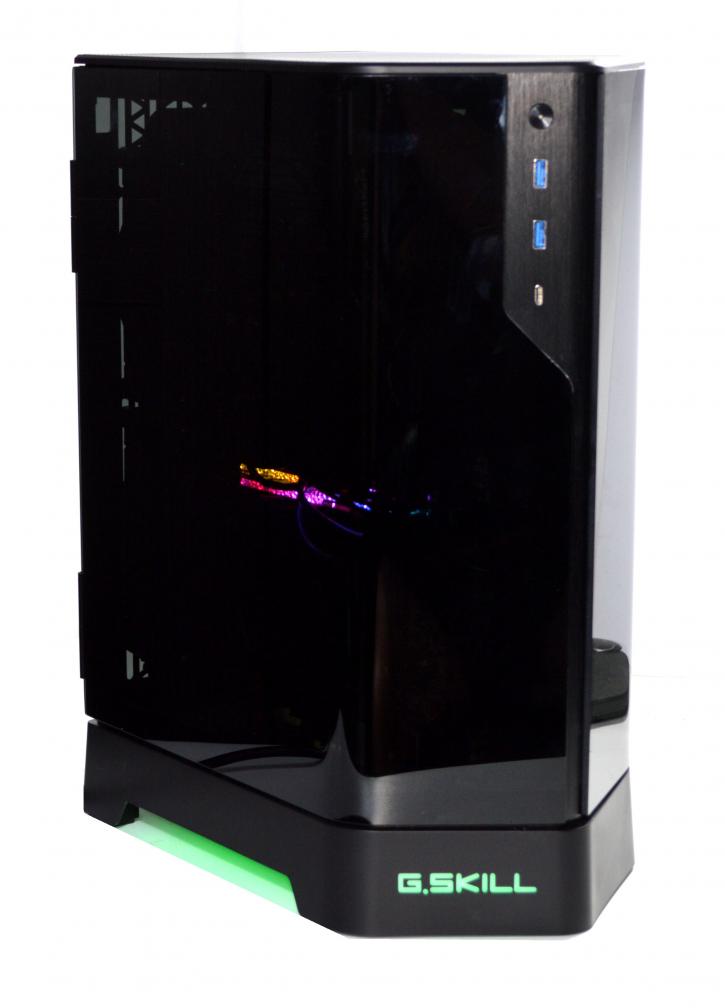Introduction
G.Skill Z5i chassis review
This time, we’re checking out the G.Skill Z5i, the first chassis from a company known the most from the RAM. Some can remember that there’s an AIO (Enki) available, as well as the keyboards (like KM360), mice (and mousepad), headsets, or PSUs. The attempt is made in a not-so-popular segment, meaning the Mini-ITX (so that’s one of the reasons for the mentioned limit). This choice is a brave one as it’s not so easy to create a good product here. Yes, it’s gaining the share, but the ATX is dominating (maybe we’ll also see something from G.Skill?). But back to the Z5i, this is a chassis aimed at the AIO cooled system, as if you’d like to install the air cooler, there’s only 70 mm of space (height) for that. It’s a mini-tower PC chassis with 24.39 l of volume. The look is rather unconventional and flashy. The Z5i has two bent glass panels with a dark tint, making it quite an eye-catcher. The G.Skill chassis received the “iF Design Award 2021” and “Red Dot Design Award 2021”, which speaks for itself. Regarding the looks – the Z5i has an ARGB underglow lighting which can be controlled via motherboard software (thanks to a 3-pin 5V connector). You don’t get any pre-installed fans here. There are no colour variants; only black is available (but it's not a bad thing after all when looking at the design). You won’t find an audio port on the I/O panel, which is rather strange (and probably more people would miss it than a USB Type-C port).
The dimensions are 307.5 x 190 x 417.5 mm (H x W x D) in total; it’s 24.4 l of volume. The Z5I supports “only” mini-ITX motherboards. It’s a dual-chamber chassis, the GPU is "hidden" in the back of it. The weight is 5.8 kg (which is not much) with two-tempered glass panels. According to the specs, there are one 3.5” (which can also handle 2.5”) and two 2.5” drive brackets. On the front, you will find the following ports:
- USB 3.2 Type-C x1
- USB 3.0 x 2,
- Power button
The G.Skill Z5I doesn’t provide many cooling options. It is capable of mounting one 280 mm radiator at the back. You also get three expansion slots. It’s possible to mount up to two 120/140 mm fans at the back. There are no typical fan filters (sic!). You can use CPU air coolers with a max height of 70 mm (which is not too much) and GPUs up to 330 mm in length (230 mm when the 3.5” drive is installed). The PSU should be either SFX or SFX-L factor.
The price is 199.99 USD, which is definitely not cheap, but the more fancy Mini-ITX chassis usually are quite expensive. Now, let’s check out the specs and features of this chassis, shall we?


